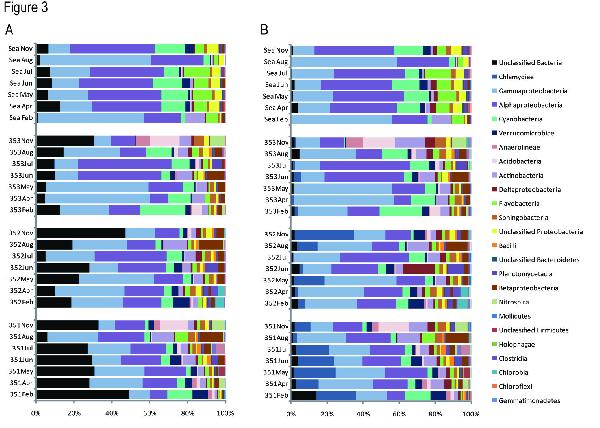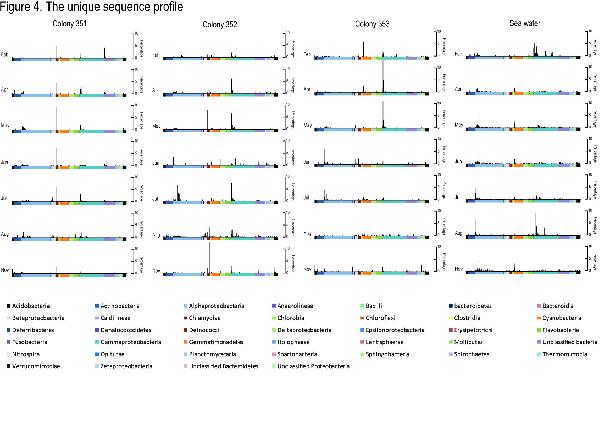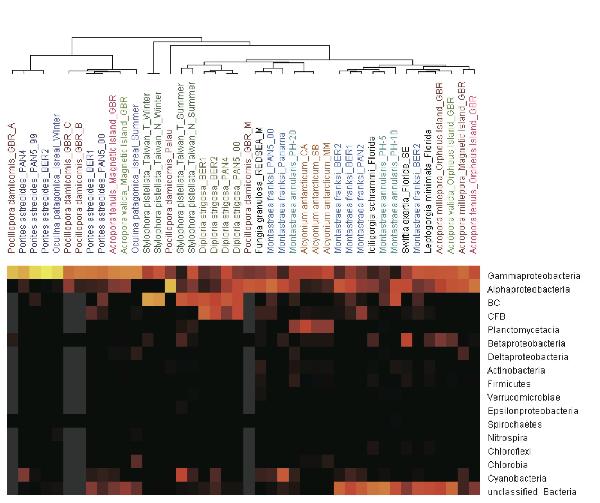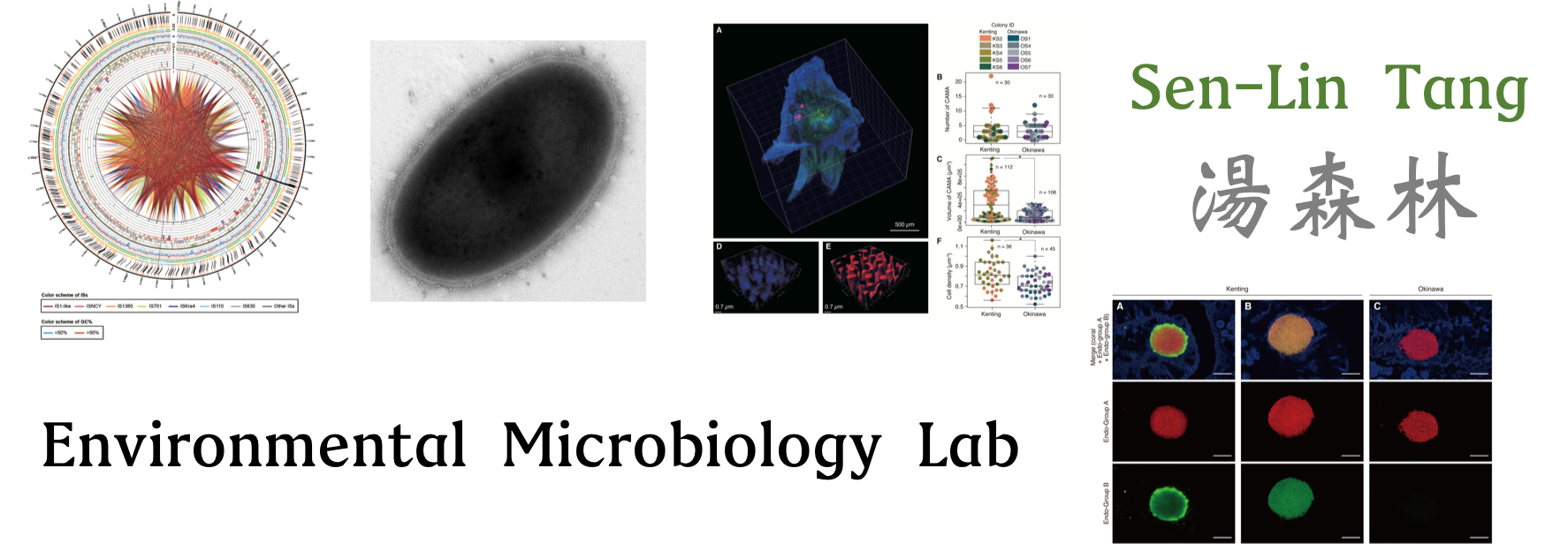 Fig 2 The unique sequence profile of I. palifera associated bacteria with seasonal change.
Fig 2 The unique sequence profile of I. palifera associated bacteria with seasonal change.
 Fig 3 The clustering analysis with coral-associated bacterial community
Fig 3 The clustering analysis with coral-associated bacterial community
 The part of results have been published on Applied and Environmental Microbiology (Hong et al., 2009) and ISME J (Chen, et al., 2010).
We have enlarged our scope of the survey to detect any correlation between geographic specificity of coral-associated bacteria as well as to find out any long-stay bacterium in corals. One survey is to monitor the change in A. muricata-associated bacteria across Taiwan, Okinawa and Japan along the Kuroshiro Current in a one-year survey. Another survey is to monitor the change in Stylophora pistillata-associated bacteria in North Taiwan, South Taiwan and offshore islet. Three sampling sites represent their special geographic specificity. We wish to examine the correlation between geograph specificity and change in coral-associated bacteria.
The part of results have been published on Applied and Environmental Microbiology (Hong et al., 2009) and ISME J (Chen, et al., 2010).
We have enlarged our scope of the survey to detect any correlation between geographic specificity of coral-associated bacteria as well as to find out any long-stay bacterium in corals. One survey is to monitor the change in A. muricata-associated bacteria across Taiwan, Okinawa and Japan along the Kuroshiro Current in a one-year survey. Another survey is to monitor the change in Stylophora pistillata-associated bacteria in North Taiwan, South Taiwan and offshore islet. Three sampling sites represent their special geographic specificity. We wish to examine the correlation between geograph specificity and change in coral-associated bacteria.
